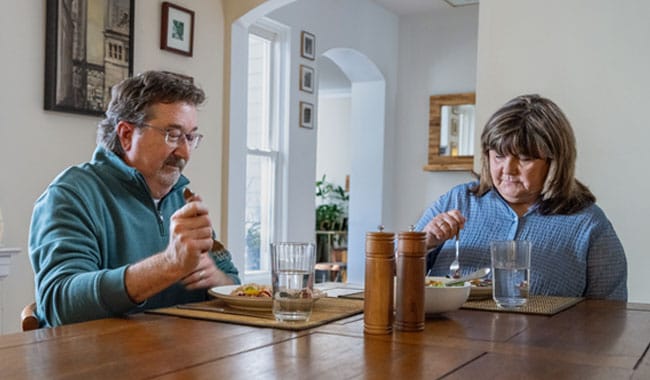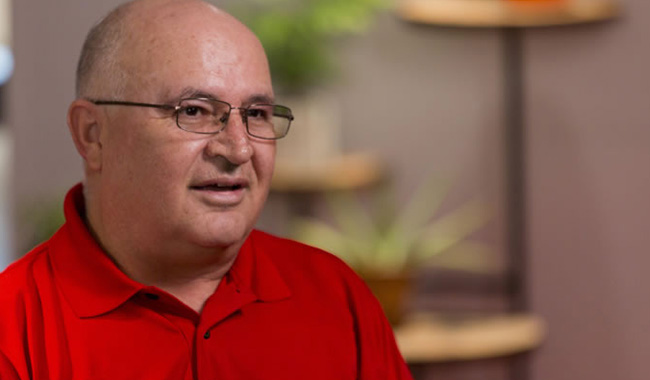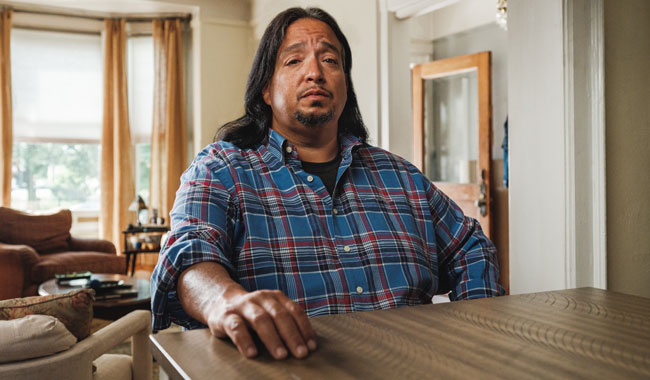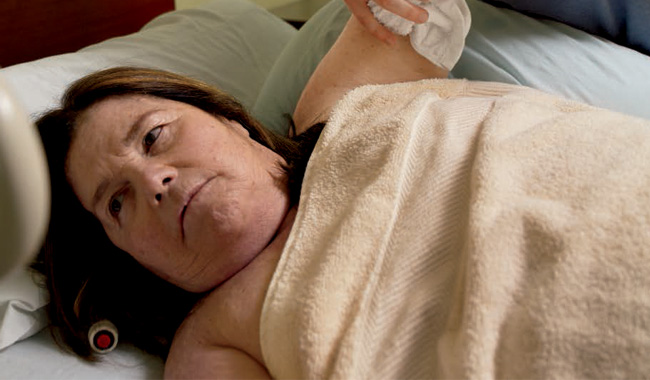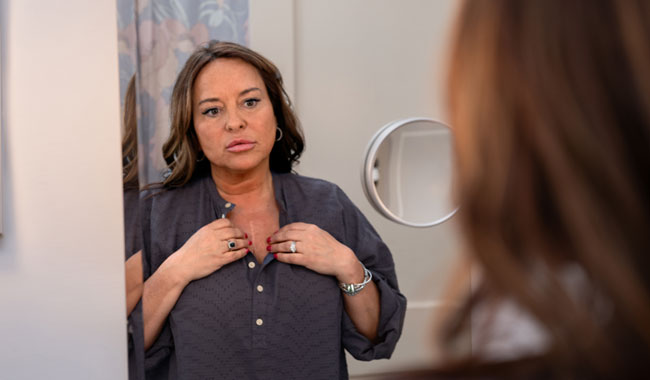Tonya M.’s Story
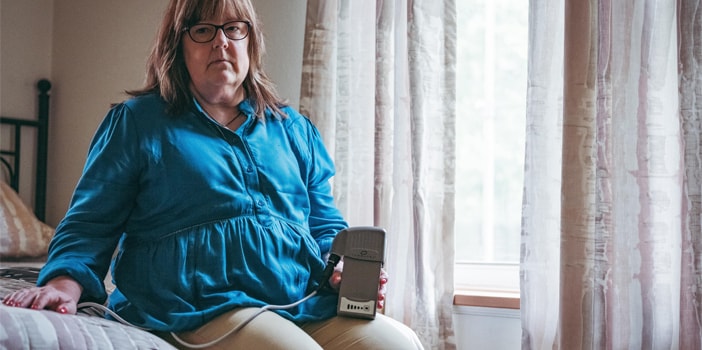
Tonya started smoking as a teenager because friends who smoked pressured her to try it. By the time she was 16 years old, she was smoking almost a pack of cigarettes a day. She smoked regularly for more than two decades. Tonya’s life changed at 38 years old when she was diagnosed with heart failure because of smoking.
Over the next few years, Tonya’s heart got weaker. In 2013, while waiting for a heart transplant, Tonya had a mechanical heart pump called a left ventricular assist device (LVAD) inserted in her chest to help continuously move blood through her body. The pump was connected to batteries through a tube that ran outside her body. Tonya carried the batteries with her in a pack worn around her waist. At night, Tonya recharged her batteries and slept with her LVAD cord plugged into an electrical outlet.
After getting the pump and going through cardiac rehabilitation, breathing was easier, and Tonya had more energy. She and her family adapted to life with her “new normal,” though she was still waiting for a new heart. Tonya quit smoking for good in 2008 but the damage to her health could not be undone. “I wish I had quit sooner,” she said. “I wish I had never picked up a cigarette.” Tonya died in 2022. She was 53.
Persons with disabilities experiencing problems accessing these videos should contact CDC-INFO at CDC-INFO email form: https://www.cdc.gov/info, 800-232-4636 or the TTY number at (888) 232-6348 and ask for a 508 Accommodation PR#9342. If emailing please type “508 Accommodation PR#9342” without quotes in the subject line of the email. Please include the URL of the site in the Subject line of your email request that you would like to access.
View more Tips videos sorted by name, disease and specific groups
Tonya M.’s Biography
By the time Tonya was 16 years old, she was already smoking almost a pack of cigarettes a day. Like many others, she started because she had friends who smoked and pressured her to try it. She continued to smoke for the next 23 years. When issues with her heart first surfaced at age 37, Tonya was smoking around two packs of cigarettes every day.

Her health problems started in the summer of 2006. Tonya woke up with pain in her chest and her husband rushed her to the emergency room. Doctors thought her symptoms were related to a surgery she was already scheduled to have in the coming weeks, and she was sent home. It wasn’t until a few months later that doctors realized Tonya had probably had a heart attack. Further testing showed that one of Tonya’s main coronary arteries (blood vessels that supply oxygen to the heart) was completely blocked and part of her heart muscle was damaged beyond repair. Restoring blood flow to her heart was not possible. Instead, doctors started Tonya on medications and surgically inserted a small device called a defibrillator near Tonya’s heart to help regulate her heartbeat. At only 38 years old, Tonya was diagnosed with heart failure.
“When you think of heart disease, you think of high blood pressure, high cholesterol, and family history, but I had none of that,” Tonya said. “The biggest risk factor I had was smoking.”
In 2010, Tonya was placed on the heart transplant list when her heart’s ability to pump blood dropped to a severely low level. Her body stopped responding to medication over the next couple of years and her heart got even weaker. “My breathing was worse, and my energy level was a whole lot lower than it had been,” Tonya said. “I felt awful.”
Tonya was still waiting for a new heart as her health declined. In 2013, her doctor inserted a left ventricular assist device (LVAD) inside her chest. The LVAD is a mechanical pump that helped Tonya’s weakened heart continuously move blood through her body. The LVAD was connected to batteries and a controller through a tube that ran outside her body. Tonya carried them with her in a pack worn around her waist.
Before Tonya was discharged from the hospital with her LVAD, her husband and two children received the same education about the LVAD as Tonya did. They learned how to keep the dressing around her tube clean, how to change the batteries, and what the different alarms meant. “It went from me being their caregiver, to my husband and kids being mine,” Tonya said. “Nobody wants that for their kids.”
Tonya and her family adapted to life with her “new normal.” At night, Tonya recharged her batteries and slept with her LVAD cord plugged into an electrical outlet. She made sure to bring everything she needed upstairs before bed so she didn’t have to unplug and walk back downstairs. When her husband put his arm around her in bed, he was careful to avoid knocking the LVAD power cord from the wall.
Tonya noticed a big improvement in her day-to-day health after getting the LVAD. She felt stronger, had more energy, and could breathe more easily. “I felt like a new person,” she said. “Luckily, there is the technology out there that can help the heart keep pushing the blood out.”
Cardiac rehabilitation was an important part of Tonya’s recovery. In her first sessions, she was too weak to walk on the treadmill for more than a couple of minutes. After 36 weeks of sessions, Tonya participated in a 5K race. She was joined by her doctor, her LVAD coordinator, and her exercise physiologist, who carried all her extra batteries and equipment.
However, Tonya’s medical challenges were not behind her. She had additional surgery to maintain her LVAD while she still waited for a new heart. She quit smoking for good in 2008 with the help of prescription medication but the damage to her health couldn’t be undone. “I wish I had quit sooner,” she said. “I wish I had never picked up a cigarette.” Tonya died in 2022 at the age of 53.



